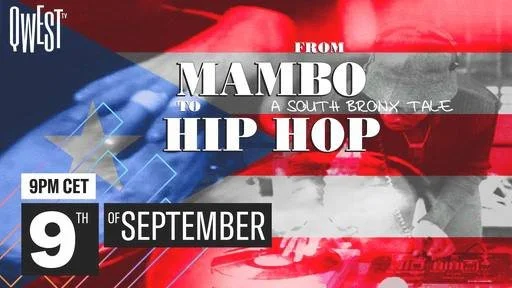QWEST TV
"Vicente Amigo is one of the great masters of the flamenco guitar. Onstage, his posture is incredibly striking when the rhythms he unleashes set the crowds aquiver. Born in Guadalcanal, in the province of Seville, he lives in Cordoba. First prize in guitar at the Festival Nacional del Cante de las Minas de la Unión (a vocals festival) in 1988, he has found international success, has received many awards, including the Latin Grammy Award for Best Flamenco Album for Paseo de Gracia in 2009 (Sony Music), and has played with the very best, such as John Mc Laughlin, Paco de Lucia, and David Bowie. For his seventh album, Tierra, released in 2013, he is surrounded by outstanding musicians whom we mostly see onstage. The inner circle consists of percussionist Paquito Gonzalez, guitarist Añil Fernandez, and singer Rafael de Utrera, whose voice modulations grab you by the throat.
As they play the songs, they are joined by composer and keyboardist Guy Fletcher, formerly of Dire Straits, who arranged the album’s nine songs, as well as flutist Mike McGoldrick and bassist Ewen Vernal, both from the Scottish Celtic music group, Capercaillie. Without losing an ounce of flamenco rhythm, which is the backbone of the concert, Amigo combines this traditional folk inspiration with his universe. The burst of song in the melody and the tempo of clapping or scraping hands contribute to the excitement. The simplicity of these virtuoso musicians captivates as much as it charms.
"The South Bronx is one of New York's cultural lungs. Directed by Henry Chalfant, Elena Martinez and Steve Zeitlin, the documentary “From Mambo To Hip Hop” confirms this phenomenon. First, the filmmakers return to the historical members of the Puerto Rican community and the musical scene that emanates from it. Various names of mambo and salsa such as Machito, Eddie Palmieri and Willie Colon are reviewed, ballrooms on the asphalt where insolent sensual choreographies are staged, and even the legendary concert of the Fania All Stars at the Yankee Stadium, all in front of more than 40,000 spectators... Reflecting endemic poverty and the real estate crisis of the mid-1970s, the second part of the film focuses, for its part, on the nascent hip-hop movement via the tutelary figures of Kool Herc and the Rock Steady Crew. Some Nuyorican b-boys (a term used to describe New Yorkers of Puerto Rican origin) comment on this harsh and paradoxically fertile period through the many sets of DJs and break competitions. Long-winded, they ultimately trace an obvious link between two cultures endowed with the same appetite for rhythm, dance, and a certain form of resilience
"First spotted by Quincy Jones who co-produced, five years ago, the unstoppable Tocororo, Alfredo Rodriguez offers, on the stage of the Jazz à Vienne festival, an extremely rich set. Known for his musical openness (he has invited, in the past, various talents including the duo Ibeyi, daughters of the great Anga Diaz), the Cuban pianist rejoins, in the unchanging setting of the ancient theater of Vienne, the singer, bassist, and fellow Cameroonian Richard Bona. Incarnation of a certain musical elite and in particular beautiful encounters at No Format with Gérald Toto and Lokua Kanza, the latter attacks the set with the heady “O Karaka;” follows suit with the capital “Ay, Mamá Inés;” and ends this first part, in a virtuoso way, with the unifying ""Gitanerias.""
A real crossover between the Caribbean and African stages, this July 2021 concert recalls, as such, the work of the project Afrocubism, at least in spirit. We feel an attraction for the essence of the rhythms perceptible in ""Bilongol,” extract of the powerful Heritage, one of the last opus of Richard Bona; or even in “Que Me Digan Feo...,” a generous and sunny beach just as we like them in Havana, on the border of the famous Malecon.
"The Panamanian Ruben Blades became one of the major voices of Latin America with his albums Siembra in 1978 and Buscando America in 1984. In this documentary, he recounts his journey and explains his artistic approach as he walks through the neighborhood, he was born in. His political beliefs before residing in New York were heavily impacted by the nationalist upheavals of his native country after the student revolts of 1964 and 1968. We also see him in concert with Seis del Solar, a band without brass instruments that combines traditional salsa with rock influences, firmly taking the genre out of the Cuban musical ghetto without denying the native ferments impelled by Dizzy Gillespie, Mario Bauza, Tito Puente and Machito.
This renewal had already been initiated with the release of the song Pedro Navaja. In more than seven minutes, with Willie Colon's orchestra and his phalanx of five trombones, the song signaled the emergence of the ""conscious salsa"" as a social weapon, equally through the lyrics and by the musical arrangement. In the documentary, Ruben Blades, born in 1948 and approaching forty at the time, takes up the title and explains the genesis of the song: the war between two gangs in his neighborhood found an echo in the Opéra de Quat' Sous and in Bobby Darin's version of Mack The Knife. Pedro Navaja (Pedro the sharpener) underlined the ambivalence of the relations of Latin Americans with the United States, a theme also taken up again in Buscando America (""Estoy llamando a America pero no me responde""/ “I am calling to America but it is not answering me.”)




